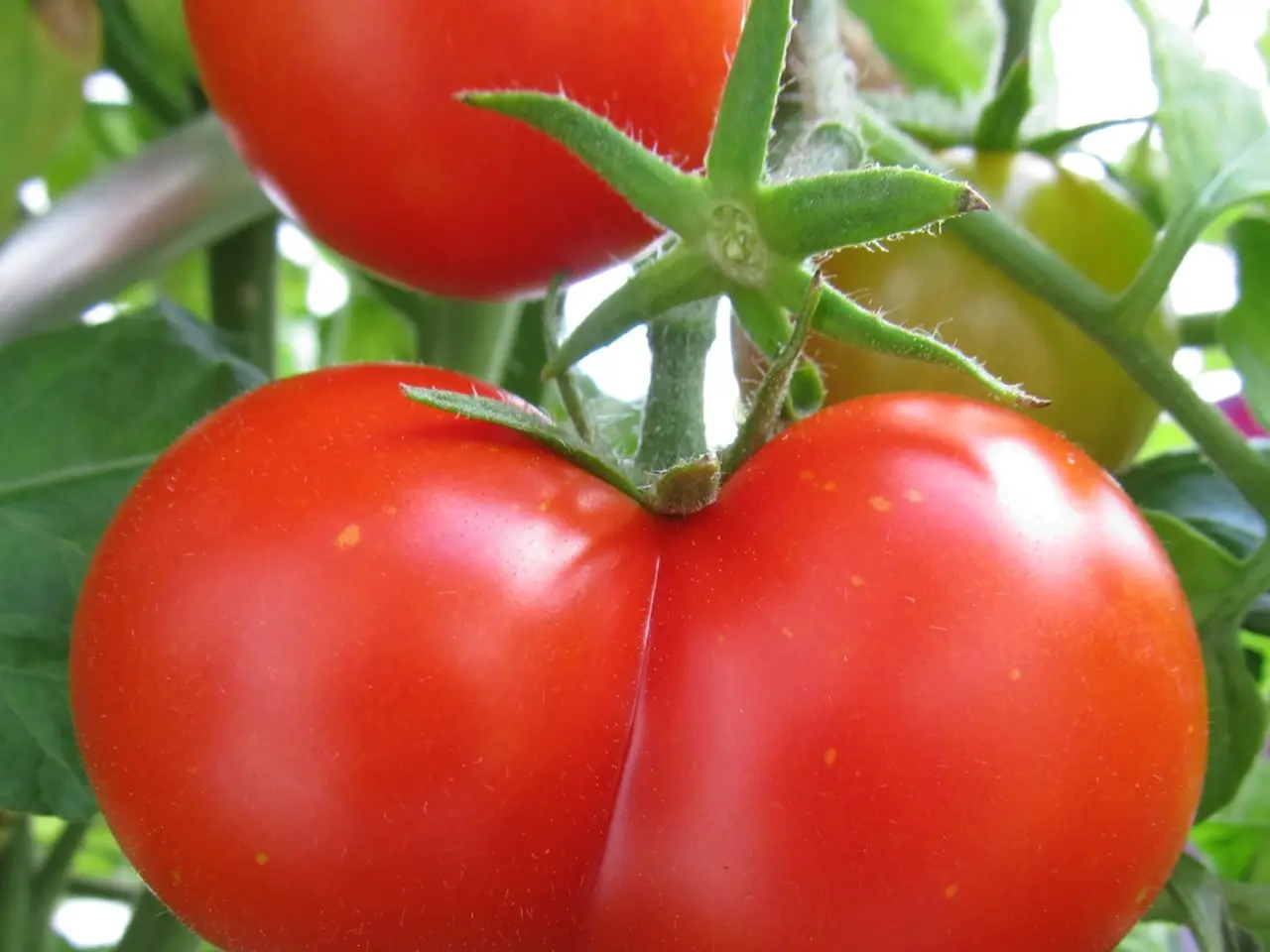Optimal Guide for Readying Your Backyard's Ground for Vibrant Tomatoes
In the quest for a bountiful harvest of juicy, flavourful tomatoes, the foundation of a successful garden lies in the quality of the soil. Here's a comprehensive guide on how to improve soil quality for your backyard tomato garden.
Tomatoes thrive in slightly acidic soil, with a pH between 6.0 and 6.8. This range ensures optimal nutrient absorption, as too acidic or alkaline soil can hinder growth. To prepare the soil for tomatoes, start by clearing existing vegetation, such as grass and weeds, to reduce competition for nutrients and water. This can be done through physical removal, sheet mulching with cardboard and compost, or turning over the sod to kill roots without disturbing soil structure.
Leveling the soil surface is essential for even water drainage and root development, especially if you're using raised beds. A rake can help in leveling the soil and removing any debris. The size of a raised bed is typically about 4 feet wide and 6-8 feet long.
Enrich the soil by incorporating a generous layer (3-4 inches) of well-rotted compost or organic matter such as composted manure. This step not only improves soil nutrients but also enhances soil structure and moisture retention. To test the soil's pH and adjust it to the preferred range, use organic amendments like lime or sulfur.
Good soil drainage is crucial to prevent waterlogging, which can lead to root diseases. In raised beds or containers, having adequate drainage holes is essential. For container tomato growing, consider using sterile, high-quality potting mix with components like peat, perlite, and compost to avoid pathogens. When making your own compost, using hot composting methods (e.g., bio composters) kills harmful bacteria and pathogens, making compost safer for tomatoes.
Mulching with organic materials such as straw or hay around tomato plants helps retain soil moisture and reduce evaporation. This practice also suppresses weeds and improves the overall health of the soil.
Growing tomatoes in organic soil not only benefits the environment by reducing chemicals in the garden but also results in tomatoes that often taste better compared to conventionally grown ones. Organic soil is full of beneficial microbes that help tomato plants fight diseases.
Lastly, tomatoes need a sunny spot that gets at least 6-8 hours of sunlight each day. With these tips in mind, creating a raised bed is a great way to provide the perfect environment for tomatoes to thrive. A trowel is perfect for planting and mixing in compost, while a garden spade is great for digging and turning the soil. Untreated wood, bricks, or stones are safe materials for building a raised bed.
In summary, improving soil quality involves clearing the site of competing vegetation, enriching soil with organic matter and nutrients, correcting pH, ensuring good drainage, and maintaining soil moisture through mulching. These steps create a nutrient-rich, well-structured environment that supports healthy root growth and high yield. Happy gardening!
Incorporating the suggested organic matter such as composted manure not only improves the quality of the soil, but also enhances the lifestyle of those who enjoy home-gardening, particularly when it comes to gardening tomatoes. Furthermore, the process of mulching with organic materials like straw or hay contributes to a quality home-and-garden environment by promoting a healthier soil ecosystem and supporting the growth of flavorful tomatoes.




